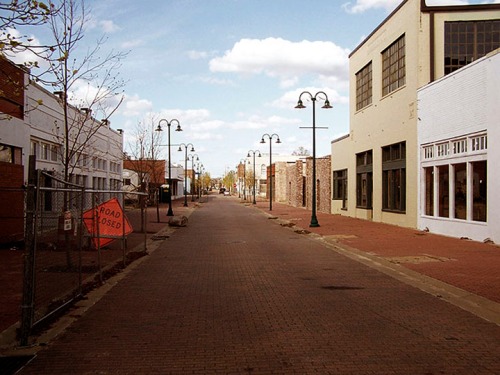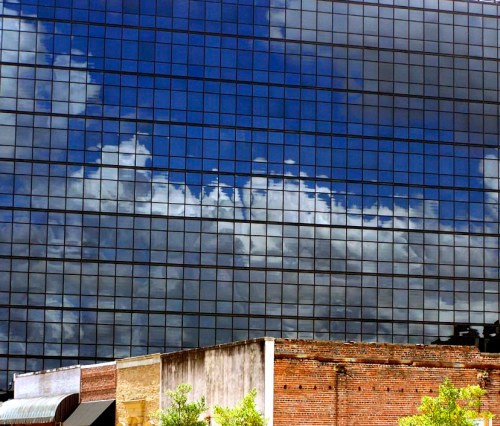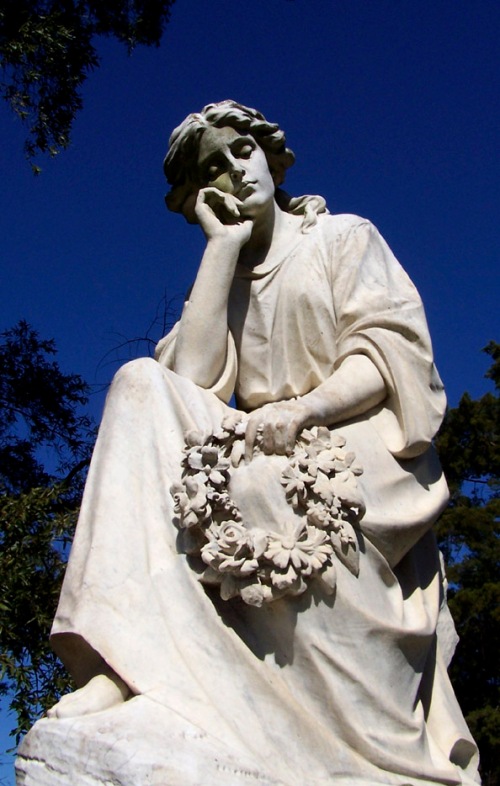A Farish Street Financial Timeline
| DATE | AMOUNT ($) | SOURCE | PURPOSE |
| 1 | 10/9/81 | 200,000 | CDBG* | Revitalization study |
| 2 | “ | 34,000 | CDBG | Extension of study |
| 3 | 7/23/82 | 100,000 | Grant, National Endowment for the Humanities via JSU | Historical survey of Farish Street |
| 4 | 12/10/89 | 1,600,000 | CDBG | Infrastructure, business loans, housing |
| 5 | “ | 85,000 | CDBG | Farish Street park |
| 6 | 11/22/94 | 50,000 | Jackson/Hinds Co. | Mary Means (Means Consulting) |
| 7 | 11/22/95 | 1,500,000 | State of Ms. | Alamo renovation |
| 8 | 3/7/96 | 130,000 | National Trust for Historic Preservation/State of Ms. | Renovation of Scott Ford House |
| 9 | “ | 200,000 | “ | Acquisition of property in Farish St. district |
| 10 | 3/26/98 | 2,500,000 | National Equity Fund; $600,000 from local banks; $350,000, CDBG (city) | “Rehab” of 37 historic houses |
| 11 | 4/27/99 | 6,000,000 | State of Ms. | Farish St. revitalization |
| 12 | 4/27/99 | 6,000,000 | Fannie Mae | Farish St. revitalization (matching of state funds |
| 13 | 3/23/01 | 1,500,000 | HUD? | Infrastructure |
| 14 | 5/22/01 | 900,000 | City of Jackson water and sewer fund | Infrastructure |
| 15 | 1/12/02 | 74,000 | ($50,000 J. Paul Getty Trust; $12,500 Ms. Dept. Archives and History; $3,500 Gannett, Inc.; $8,000 ChemFirst, Inc.) | Farish St./Scott-Ford Museum |
| 16 | 3/8/11 | 210,000 | Civil rights grant(?) | Medgar Evers House Museum |
| TOTAL | 21,082,000 |
*(Community Development Block Grant – HUD)
Not included in this document are amounts for donations of real estate (e.g.: from state of Mississippi; donation of Alamo from Sunburst Bank), funding for the Smith-Robertson Museum and contract fees paid to Performa Entertainment and subsequent developers.
1) Hester, Lea Ann. “City expected to extend study of Farish Street.” The Clarion-Ledger 19 October 1981: 1B. Print.
2) Ibid.
3) Hester, Lea Ann. “Farish: Older than thought?” The Clarion-Ledger 23 July 1801: 1B. Print.
4) Scruggs, Afi-Odelia E. “Development plan fails to revitalize Farish Street.” The Clarion-Ledger 10 December 1989: 1A. Print.
5) Ibid.
6) Simmons, Grace. “Farish Street consultants to share info.” The Clarion-Ledger 9 October 1993: (no page cited)
7) Gates, Jimmie. “Renovation closer for Farish Street’s Alamo Theatre.” The Clarion-Ledger 22 November 1995: (no page cited)
8) Harris, Barbara. The Jackson Advocate. “Farish Street Historic District gets infusion of national, state funding.” 7 March 1996: 1A. Print.
9) Ibid.
10) Fleming, Eric. “Farish Street renovation under way.” The Mississippi Link. 26 March 1998. 1A: Print.
11) Henderson, Monique H. “Draft document targets Farish St. Historic District:12M allotted for development of district.” The Clarion-Ledger. 27 April 1999. 1B Print.
12) Ibid.
13) Mayer, Greg. “$1.5M grant going to Farish Street.” The Clarion-Ledger. 22 March 2001. 1B: Print.
14) Ibid.
15) _______. “Black museum receives grant.” The Picayune Item. 12 January 2000. (no page cited)
16) Mitchell, Jerry. “$2M-plus in grants awarded to state civil rights sites.” (“$210,000 will help stabilize the foundation and repair the Medgar Evers House Museum in Jackson.”) The Clarion-Ledger. 3 August 2011. (no page cited)
Letter from Jackson
Darling Julia,
I should soon come home to Carolina, to the house you love, to the deep old woods I love, and to loving you, forever.
When I get back, I know you’ll ask me about Jackson, what it is like, what its people are like, how it looks, how they live, what makes the city what it is. I’m going to tell you now to clear my mind of it, leave it forever. Once home I do not want to think of it.
Jackson is a fractured collection of people in a city that has lost all sense of itself, a shattered glass best melt and recast. It’s an ugly place; there are few beautiful buildings, no streets of stately homes one expects to see in an old Southern city, just blocks upon broken blocks, mile upon miserable mile of buckling asphalt and falling buildings.
The city lacks grandeur, even faded grandeur, in any degree. Its main street is blemished by vacant shops and offices with dusty, empty, shattered windows like rotten teeth. Even its recent upgrade with roundabouts and verges doesn’t disguise the squalor.
Poverty and racial tension propel Jackson, a volatile combination that pulls back more than it pushes the social, economic, physical nature of the city. The political landscape is dominated by self-serving personalities motivated solely by a desire to stay in office in order to further their own ends. Inevitably, the lion’s share of federal funding finds its way to empower political ends.
I can see you smiling as you read this, thinking, “You fool, it’s Mississippi; what did you expect?” Well, darling, I did expect more. I told you that before I came here. I expected to find people working together, a fellowship of stewards.
Tell me that’s why you love me, because I am a dreamer, and every night here, I dreamed of you in that old house in the mountains under a million stars.
All my love, my being.
Tim
Mayflower Kitchen
Interview with Helen Ackle Lyons
The Lebanese community is a pillar of Jackson society, well deserving of a more comprehensive look, but this interview with Helen stands superbly on its own.
I’m first-born in this country.
My grandfather’s brother married my daddy’s sister (Ellis Joseph and Albert Joseph). Albert was married to Mary Ackle, the English spelling they gave us in Ellis Island. Other people with the background name, which means “brain” in (Levantine Arabic), spell it “Akl”. The Cherokee Inn founder was my daddy’s brother, Joseph Ackle. The other side of the family “Aswic” (?) but they took Christian names. “Aswic” in Arabic means “black”, but the name they took was Simon. And that leads to another story; that of why they used the name “Simon”, which is of course in the Bible, as were all the names: my brother was Isaac, his brother was Joseph (Ackle).
The Simon surname comes from my mother’s uncle; he first came to this country sometime around 1900, earlier than my (Ackle) family. They came through New York. All the families I’m talking about came through Ellis Island. When the Lebanese people all have a name that maybe they spell a little different, “Ackle” can even come from the name “Hackle”. They took these names because of the pronunciation. It wasn’t clear, what with their “brogue” their accent, whatever you want to call it, some would put an “h” on it because of the guttural pronunciation. I know more because of my grandmother, my Daddy’s mother, she lived with us in Jackson. They first came to Lawrence, Massachusetts, which is a bedroom community of Boston. And the reason for that was, so many of the ethnic people stayed there in Lawrence. So many of the cemeteries are full of the Orthodox families who lived there. And one of the Joseph boys, who was Albert Joseph’s grandson, that’s my Daddy’s side of the family, they were Ackles on that side, on the Albert Joseph side. The Ellis Joseph side, though they were brothers, I was not directly kin to them, however, all of these people in Lebanon came from the eastern side of Beirut, up in the mountains.
We spoke Arabic, but not the “true Arabic”. When they came to this country and wound up down here, there was not an Orthodox church here in Jackson. The first Greek Orthodox church in Jackson did not appear until during the Forties. At that time, if you wanted to go to an orthodox church, at that time the orthodox church in Vicksburg was one of if not the oldest in the Southeast. The Lebanese people came to Vicksburg earlier than ours did to Jackson. Ellis Boudron’s family was one of the earliest Lebanese families in the country. Mary Louise Jones is my second cousin. Her daddy was my first. William P. Joseph was my daddy’s nephew. I went with my cousin William P. Joseph to Lebanon. I promised my mother’s mother, Haifa Nassah, married a Simon, original name was Aswic. The reason they became Simon is because my grandfather’s half-brother, who was a professor at the University of Beirut, came to America before the rest of them. He became a professor at the University of South Carolina.
I went to kindergarten at Poindexter. It was the only school that had a kindergarten. We moved from Farish Street to Gallatin Street and then to west Jackson when I was six years old. Clairmont Street. I was born in 1925 so that would have been in 1931. The street is no longer there. I went to Barr School. I went to Enochs Junior High, then to Central High School. I graduated in 1943. I want the emphasis on the culture. People seem to think that I’ve had a very interesting life. I married in New York City, a story that started in WWII. I can’t say that any of my other cousins had the kind of life that I had. My husband was from Pennsylvania. The only reason I was permitted to get married at that time was that my father was interested in the military because he got his citizenship by serving in the military in New York City. My father was interested in going back to Europe because when he came to this country, he left from Le Harve, France. Believe it or not, he was in the air corps in WWI he delivered mail on a motorcycle to the troops in France. That was the story my Daddy told. And he knew some French because of the French in Lebanon. When he came to America, he came because they were being starved. There was a famine, and my father remembered it. I listened to the old folks with my ear to the doors. They spoke in Lebanese among themselves.
Over the years, we have learned many things through our federation that we did not know, these things that we are learning how our culture relates to the Jewish culture. The Federation of Southern Lebanese Clubs has been in existence for about eighty years and has been a life-saver for so many people in our culture to learn from the professors that have studied our background, particularly the ones at the University of Texas. The immigrants didn’t want any emphasis put on them being Lebanese; my father hid a lot of things from us when we were children; he wanted us to grow up as Americans, and we did. He was a young man when he came to Jackson, around 10 years old. He was born in 1898 (Isaac Ackle).
Getting back to them coming to this country, they stayed in Lawrence, MA, until his mother, my grandmother and my daddy went back to Lebanon to get the youngest child who couldn’t come in on the first passage that they bought on a family passage. The little girl was younger than my daddy. I’m assuming, since he was like 10 when he did that, it must have taken them two years to go there, come back and then come South. I know that there were many Lebanese scattered in this area already. It was less developed than in the north, and they were out to make a livelihood out of what they did in the old country. They were merchants and during those days my grandfather peddled, wheeling a buggy, peddled merchandise, “notions”, Momma’s side was related to S.N. Thomas. But they all knew each other. They all came from small towns: Dufaya, Duschway, we have maps showing where they came from. They’re at the clubhouse on Cedars of Lebanon. The building has been there since I was 13. It was dedicated in 1938, July.
My grandfather Joseph Ackles was a peddler. He got to the neighboring communities in a cart with a horse. That year was probably like 1910-11. He peddled materials, dry goods, and there was a family in Jackson whose family wrote a book about Mr. S.N. Thomas, very well-known, they had a wholesale business on President Street. My mother’s mother was related to that family (you can use Billy “William” Thomas as a reference; he still doing ordering for merchants, and he is the surviving grandson of S.N. Thomas). This leads to the Buttross family in Canton.
Let me go back to the clubhouse. The reason we have a clubhouse is because we did not have a church and they wanted to keep the culture alive for their children. That was the reason for five brothers, five names that started the club by buying fourteen/twelve acres. The brothers were the Ackle brothers, two of them, Isaac and Joseph; the Sik brothers; the Joseph brothers, the Simon brothers; I don’t know who the fifth brothers were. Alfred Katool could tell you the fifth. The clubhouse was built by the WPA. And the governor of Mississippi, Hugh White, dedicated the club.










